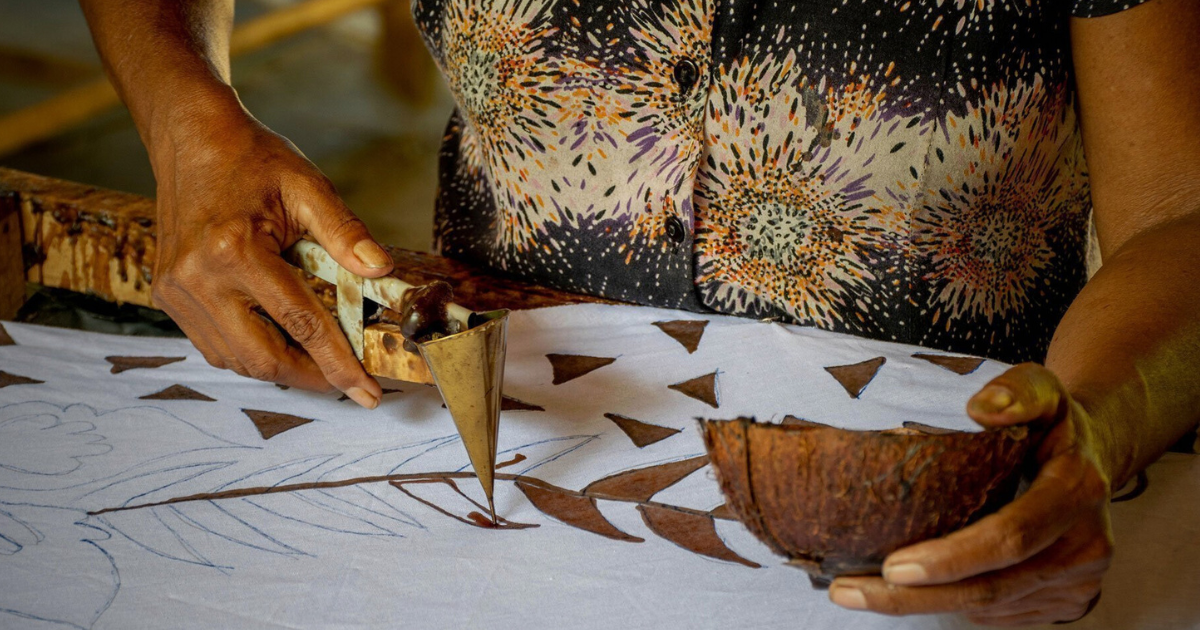Batik, a traditional fabric art form renowned for its intricate patterns and vibrant colors, has evolved significantly over the centuries. From its ancient origins to contemporary fashion, batik patterns have undergone a remarkable transformation, reflecting changes in cultural, social, and artistic trends. Here’s a journey through the evolution of batik patterns and how they continue to shape and influence modern design.
- Ancient Beginnings: Traditional Patterns
Batik’s origins can be traced back to ancient Indonesia, where it was initially used for ceremonial and ritualistic purposes. The earliest batik patterns were deeply symbolic, often depicting motifs related to nature, spirituality, and social status. Designs such as floral patterns, geometric shapes, and symbolic imagery were created using traditional resist-dye techniques, which involved applying hot wax to fabric to create intricate designs.
- The Javanese Influence: Classic Motifs
During the Javanese period, batik patterns became more sophisticated and refined. The art form was highly developed in Java, with distinct regional styles emerging. For instance, the “Parang” motif symbolized strength and was reserved for royalty, while “Kawung” patterns, inspired by the shape of palm flowers, were used for everyday wear. These classic motifs became iconic representations of Javanese culture and batik craftsmanship.
- Colonial Influence: A Fusion of Styles
The arrival of European colonizers in Southeast Asia introduced new influences to batik design. Colonial-era batik often combined traditional Indonesian patterns with European artistic elements, leading to a fusion of styles. This period saw the introduction of new colors, patterns, and techniques, resulting in unique hybrid designs that reflected the cross-cultural exchanges of the time.
- Modernization: Contemporary Patterns
As batik moved into the 20th century, it began to adapt to changing fashion trends and technological advancements. Modern batik artists and designers started experimenting with new materials, dyes, and techniques, leading to a broader range of patterns and styles. Contemporary batik patterns often incorporate abstract designs, geometric shapes, and bold color combinations, reflecting the influence of modern art and design movements.
- Globalization: Batik Goes International
With the globalization of fashion, batik has found its way onto international runways and into global fashion markets. Designers from around the world have embraced batik’s unique aesthetic, integrating it into high fashion collections and everyday wear. This global exposure has led to the evolution of batik patterns, blending traditional motifs with contemporary influences to create fresh, innovative designs.
- Digital Age: Innovative Techniques and Designs
In the digital age, batik has continued to evolve with the advent of new technologies. Digital printing and advanced textile techniques have allowed for greater precision and creativity in batik design. Artists and designers can now experiment with intricate patterns, vibrant colors, and unconventional materials, pushing the boundaries of traditional batik and expanding its possibilities.
- The Future of Batik Patterns: Preservation and Innovation
Looking forward, the future of batik patterns lies in balancing the preservation of traditional techniques with the embrace of modern innovation. As designers continue to explore new possibilities and interpretations, batik remains a dynamic and evolving art form. The ongoing evolution of batik patterns ensures that this rich cultural heritage continues to inspire and captivate new generations.
Batik’s journey from ancient craft to contemporary fashion is a testament to its enduring appeal and adaptability. By exploring the evolution of batik patterns, we gain a deeper appreciation for this timeless art form and its impact on global fashion.

